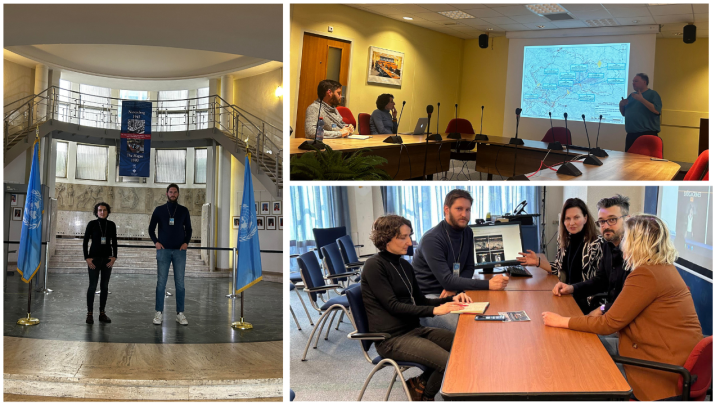MIP hosts one-week study visit for historians of the ‘90s Museum from Serbia

The Mechanism Information Programme for Affected Communities (MIP) welcomed two historians, Ms. Sanja Radović from Serbia and Mr. Filip Kuzman from Montenegro, representing the Museum of the ‘90s from Serbia. The ‘90s Museum is scheduled to open its doors in 2025, with the pilot project exhibition "Labyrinth of the Nineties" already launched in 2023. This exhibition is set to tour countries across the region in 2024.
The one-week study visit aimed to equip them with advanced skills in researching the ICTY and Mechanism archival material, crucial for enhancing the upcoming exhibitions at the Museum of the ‘90s. Additionally, the visit fostered discussions on innovative ways to integrate court material into museum exhibitions focusing on the conflicts of the 1990s.
During the visit, MIP conducted a workshop focusing on effective search techniques and the utilisation of the court database. The MIP team, including Coordinator Ms. Rada Pejić-Sremac, Researcher Mr. Nemanja Stjepanović, and Video Producer Ms. Nataša Damnjanović, showcased their work using the database. They presented MIP’s impactful social media campaigns commemorating anniversaries of crimes prosecuted by the ICTY or Mechanism and online exhibitions highlighting judicial processes related to the conflicts in the former Yugoslavia. They emphasised that all MIP video productions rely exclusively on the information from ICTY and Mechanism archives including judgements, exhibits such as audio and video materials, and witness testimonies from courtrooms.
They also stressed that MIP's guiding policy when creating social media content to commemorate anniversaries of crimes adjudicated by the ICTY and Mechanism is to honour the victims. As a result, many videos highlight victims' testimonies from the court, showcasing their courage in discussing these often deeply traumatic events and in that way giving a human face to the judicial processes. This approach not only humanises the judicial processes but is also regarded as the most appropriate method by the visiting historians and is reflected in their work as well.
Additionally, the researchers had an opportunity to meet with the Office of the Prosecutor representative, Mr. Iain Reid, who presented them with the evidence used in cases related to Sarajevo and Srebrenica. Mr. Reid explained that the OTP evidence collection contains 9.3 million pages of documents, 9,500 videos, 4,000 discs, and 14,000 artifacts. Following the presentation, the researchers visited the OTP's vaults and observed some of the valuable documents and artefacts contained in this collection.
The MIP’s engagement with Museums and artists from the former Yugoslavia forms part of the Programme’s efforts to support organisations and projects utilising ICTY and Mechanism archives when presenting events of the 1990s conflict.
The aim of the MIP is to improve the knowledge and understanding of citizens and communities in the countries of the former Yugoslavia about the crimes committed during the conflicts of the 1990s, based on the jurisprudence of the ICTY and the Mechanism. The MIP is funded by the European Union.